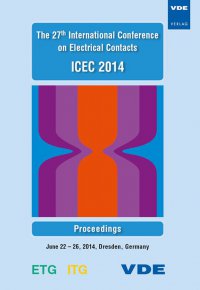Sheath layer modeling for switching arcs
Conference: ICEC 2014 - The 27th International Conference on Electrical Contacts
06/22/2014 - 06/26/2014 at Dresden, Deutschland
Proceedings: ICEC 2014
Pages: 6Language: englishTyp: PDF
Personal VDE Members are entitled to a 10% discount on this title
Authors:
Barbu, Bogdan; Berger, Frank (Technische Universitaet Ilmenau, Ilmenau, Deutschland)
Abstract:
Nowadays, in the field of electric arc simulation one the main research points focuses on the physically correct description of the near-electrodes regions that have been found to have a high influence on the entire discharge. Considerable advances for the theoretical description and the mathematical modeling of the sheath layers has been done in the last years. Simulation models that consider the interaction between the electrode and the plasma system through the sheath layers have been developed, improved, and compared with experimental data especially in the field of cutting arcs where the discharge has a much more stable behavior over the entire experimental time. In this paper an overview of the existing theoretical models will be given and their applicability in the field of switching arc modeling will be discussed. The main focus of the current study will be on the method used for implementing the empirical sheath layer models (Voltage-Current Density characteristics) considering three different simulation models. The main advantages and disadvantages of each model will be discussed together with the results obtained from experimental research.


